A white horse stark against a black beach. A family pushes a car through floodwaters in Chiayi County. People play on a beach in Pingtung County, as a nuclear power plant looms in the background.
These are just some of the powerful images on display as part of Shen Chao-liang’s (沈昭良) Drifting (Overture) exhibition, currently on display at AKI Gallery in Taipei.
For the first time in Shen’s decorated career, his photography seeks to speak to broader, multi-layered issues within the fabric of Taiwanese society.
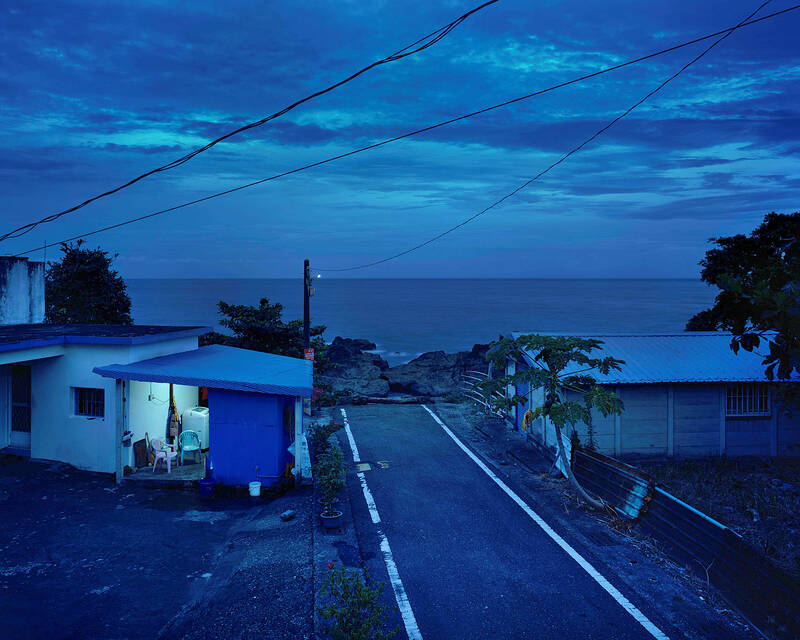
Photo courtesy of the artist and AKI Gallery
The photographs look towards history, national identity, ecological changes and more to create a collection of images speaking on the country’s contemporary context.
“Can I use landscapes to describe a country?” Shen said to an assembled panel last Saturday at AKI Gallery.
‘THEY ARE SILENT’
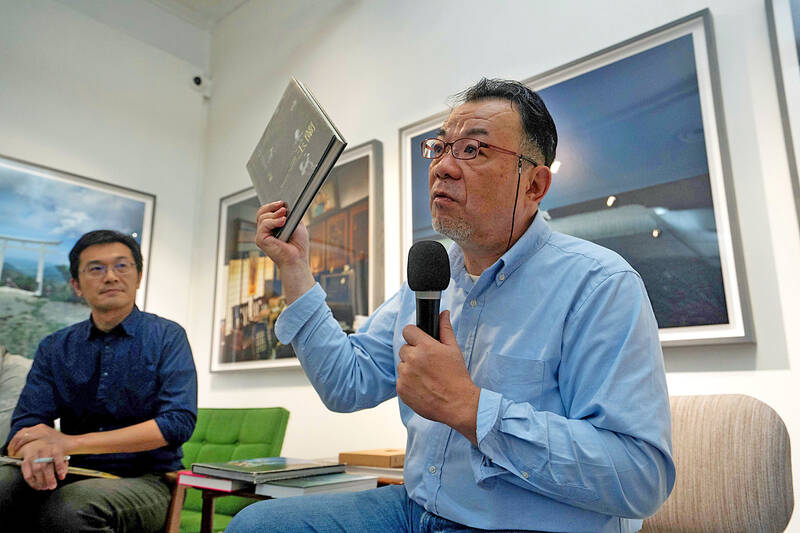
Photo: Lery Hiciano, Taipei Times
Shen’s resume is impressive — previous projects have led him to exhibitions in Taiwan, Japan and South Korea, on subjects as diverse as local entertainers to earthquake survivors and religious festivals.
But with those in-depth projects came a need to embed himself with his subjects in order to communicate their stories.
In a stark departure from his previous work, like Stage, Tsukiji Fish Market (築地魚市場) or Taiwan Vaudeville Troupes (台灣綜藝團), the photographs in Drifting (Overture) do not center people. In his words, “they are silent.”
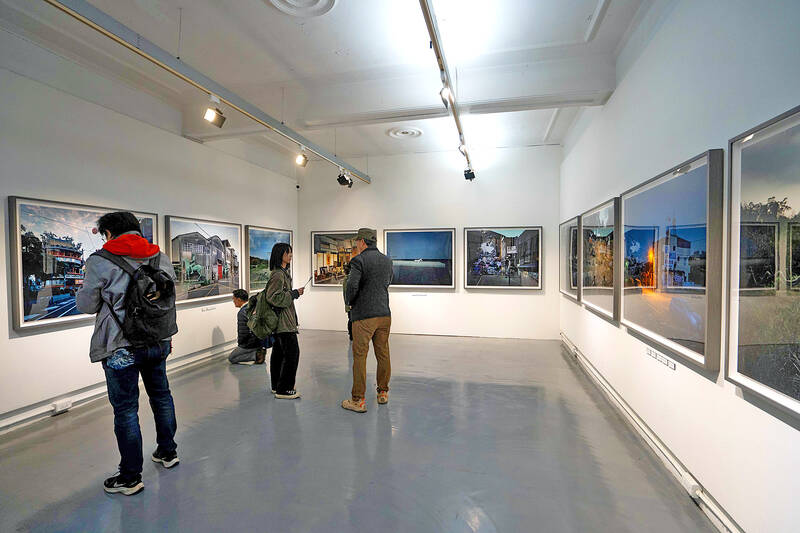
Photo: Lery Hiciano, Taipei Times
“The older I get, the less I want to talk to people,” Shen said to audience laughter.
The lack of people in the photographs speaks to the environment of Taiwan, both human-made and naturally-occurring, the country’s changing identity and anxieties about what it means to be Taiwanese.
This project took 10 years to complete, spanning three presidential administrations, a global pandemic, Taiwan’s entry into mainstream international political debates, and much more.
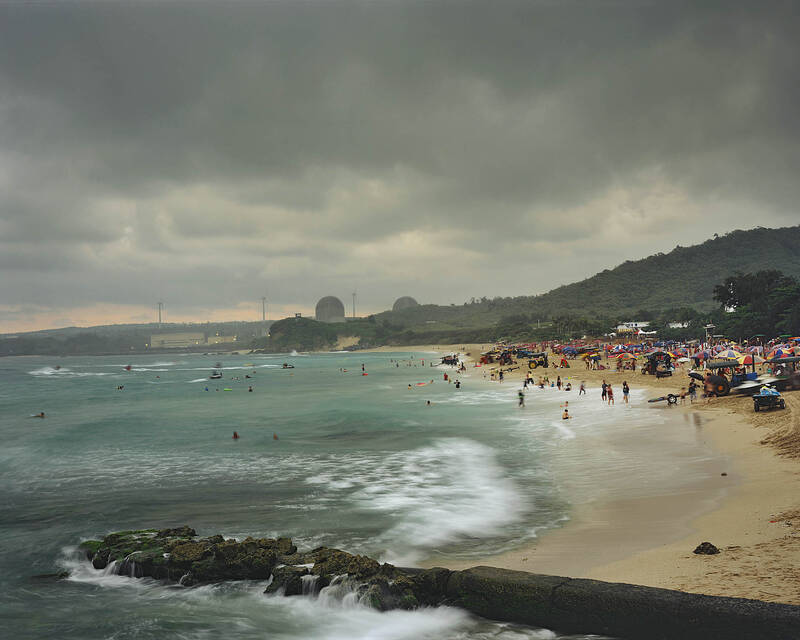
Photo courtesy of the artist and AKI Gallery
For those unaware of Taiwan’s history, the photographs may seem to lack a narrative, but the length of time spent on this project speaks to the artists’ attentiveness and the care placed in selecting each image.
For example, one photograph of an empty street in New Taipei City shows two larger-than-life statues of Chiang Kai-shek (蔣介石) and Chiang Ching-kuo (蔣經國).
To those unfamiliar with the ongoing controversies around the Chiang family and the debate over transitional justice, it may be difficult to identify their importance at first sight, but the solitary statues, devoid of attention in an anonymous corner of the city but still in immaculate condition, speak to how modern society continues to grapple with the two former leaders.
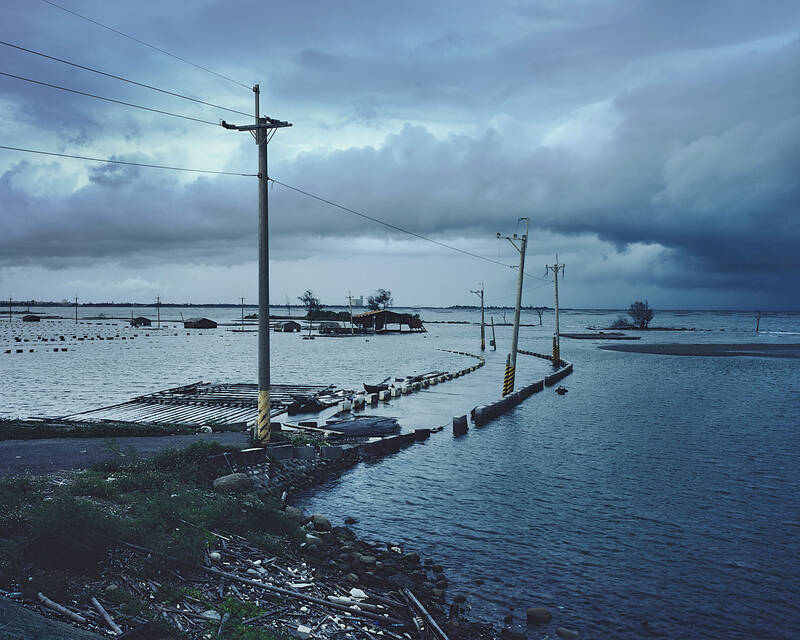
Photo courtesy of the artist and AKI Gallery
‘SEARCH FOR DIRECTIONS’
Touching on Taiwan’s history, including issues like the White Terror period of martial law, Shen said, “The Taiwanese experience is like a boat searching for directions.”
The controversies around the Chiang family are emblematic of that search.
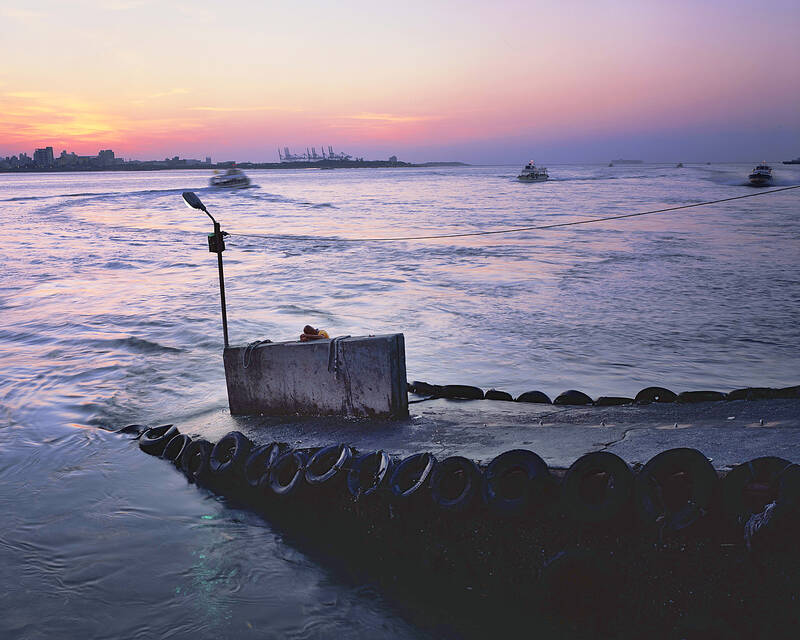
Photo courtesy of the artist and AKI Gallery
Shen’s fellow panelist asked the artist about the lack of photographs touching on COVID-19, saying the empty images “feel like they’ve been taken after a catastrophe.”
The pandemic led to him reflecting on Taiwan’s past, present and future, the artist said, adding that he never stopped waking up early to photograph his surroundings.
When asked by the Taipei Times when he knows he has taken enough photographs to consider a project completed, Shen said that his goal was to move away from his former photojournalist background and desire to view his photographs “impartially” to communicate his story.
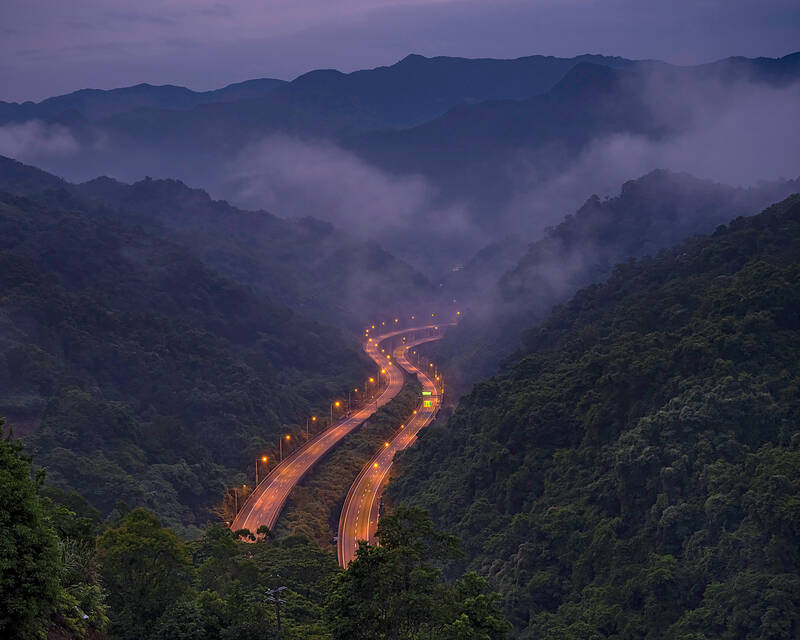
Photo courtesy of the artist and AKI Gallery
When asked how a photographer can look at their own work objectively, Shen said that objectivity and subjectivity are far less important than perspective.
Comparing it to photojournalism, where a photographer takes 100 photographs only to have one ultimately selected by the newspaper for a story, Shen asked rhetorically, “is that process objective?”
“There is no objective, subjective or absolute.”
To Shen, photography is about expressing his own ideas and meeting his own needs.
“What are you trying to say? You cannot lose your perspective in the search for objectivity.”
The exhibition’s brochure says that the “invisible” truths of history “shape our destiny and potential visions.”
Shen, one can say, makes these invisible truths visible.
One can see the invisible in a loaded image of an empty room filled with mementos and paperwork of bygone eras, a gray industrial facility nestled within green mountains or in the silhouettes of excavators digging through the rubble caused by an earthquake.
All these and more are now on display as part of Drifting (Overture).
“I wanted to use landscapes to unleash the essence of photography,” Shen said.
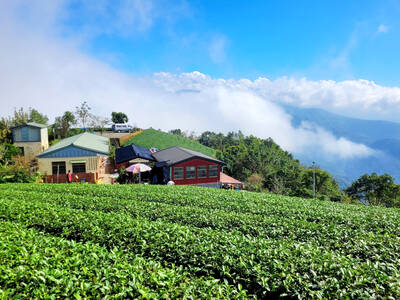
Every now and then, it’s nice to just point somewhere on a map and head out with no plan. In Taiwan, where convenience reigns, food options are plentiful and people are generally friendly and helpful, this type of trip is that much easier to pull off. One day last November, a spur-of-the-moment day hike in the hills of Chiayi County turned into a surprisingly memorable experience that impressed on me once again how fortunate we all are to call this island home. The scenery I walked through that day — a mix of forest and farms reaching up into the clouds
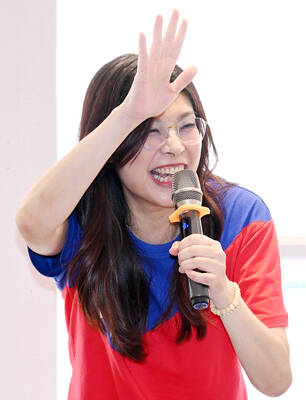
With one week left until election day, the drama is high in the race for the Chinese Nationalist Party (KMT) chair. The race is still potentially wide open between the three frontrunners. The most accurate poll is done by Apollo Survey & Research Co (艾普羅民調公司), which was conducted a week and a half ago with two-thirds of the respondents party members, who are the only ones eligible to vote. For details on the candidates, check the Oct. 4 edition of this column, “A look at the KMT chair candidates” on page 12. The popular frontrunner was 56-year-old Cheng Li-wun (鄭麗文)
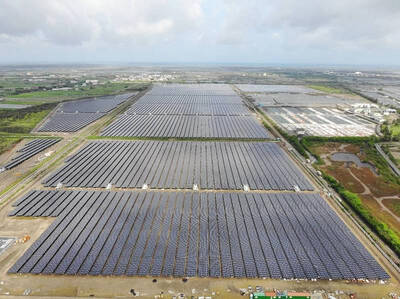
“How China Threatens to Force Taiwan Into a Total Blackout” screamed a Wall Street Journal (WSJ) headline last week, yet another of the endless clickbait examples of the energy threat via blockade that doesn’t exist. Since the headline is recycled, I will recycle the rebuttal: once industrial power demand collapses (there’s a blockade so trade is gone, remember?) “a handful of shops and factories could run for months on coal and renewables, as Ko Yun-ling (柯昀伶) and Chao Chia-wei (趙家緯) pointed out in a piece at Taiwan Insight earlier this year.” Sadly, the existence of these facts will not stop the
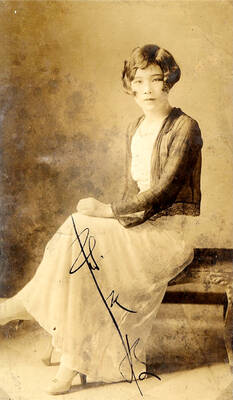
Oct. 13 to Oct. 19 When ordered to resign from her teaching position in June 1928 due to her husband’s anti-colonial activities, Lin Shih-hao (林氏好) refused to back down. The next day, she still showed up at Tainan Second Preschool, where she was warned that she would be fired if she didn’t comply. Lin continued to ignore the orders and was eventually let go without severance — even losing her pay for that month. Rather than despairing, she found a non-government job and even joined her husband Lu Ping-ting’s (盧丙丁) non-violent resistance and labor rights movements. When the government’s 1931 crackdown